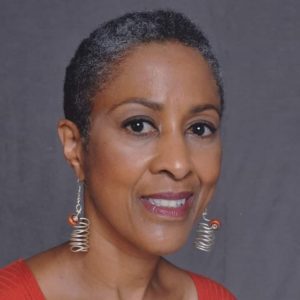This July, our Chautauqua living history series goes virtual as Maryland Humanities raises the voices of four notable women who took action to secure their right to vote. Communications Specialist Sarah Weissman spoke with Sherrie Toliver, the actor-scholar who will play Mary Church Terrell. Each Wednesday at 1:00 p.m., we will stream the performance and host a live Q&A with the performers starting at 2:00 p.m. The performance of Terrell will be available July 20–26 and the stream and Q&A will occur Wednesday, July 22.

“What drew me to her was that she reminded me of my mother in many ways,” says Sherrie Tolliver about Mary Church Terrell, who Tolliver portrays. “My mother believed very strongly in the ‘Lifting As We Climb’ philosophy of the National Association of Colored Women’s Clubs,” which Terrell helped found and eventually led as the group’s first president. Terrell also helped found the National Association for Advancement of Colored People (NAACP).
Tolliver’s mother was “a member of several women’s civic organizations, and some of my fondest memories are of the ladies in their hats and gloves at their meetings raising money for community needs,” she says. “They were very elegant, very educated, and very serious about being of service and getting their voices heard, just like Mary Church Terrell and her colleagues.”
Tolliver’s mother is also partly responsible for her discovering the historic figure. She first learned about Terrell in Profiles of Negro Womanhood, part of a ten-volume set from the 1960s Tolliver’s mom purchased called The Negro Heritage Library. “I was struck by her [Terrell’s] noble appearance, and her long list of accomplishments,” Tolliver says. “She’d lived a life that most people would not imagine a Black woman could have lived at that time, which was very eye-opening.”

Tolliver then speaks on Terrell’s relationship to motherhood: she had three children who all died as infants. “With all her wealth and privilege, she could not protect her babies from the scourge of race prejudice,” Tolliver says. This issue is not confined to the past. In 2017, the Office of Minority Health at the Department of Health and Human Services reported that Black Americans have 2.3 times the infant mortality rate as non-Hispanic whites.
Terrell’s children “died because she was denied access to adequate medical care. What struck me even more was her willingness to say that she almost lost her mind and her life to depression as a result. Here she was, an educated, middle class, ‘Strong Black Woman,’” an archetype that still persists. “She was supposed to be able to cope with that, but she admitted to having suicidal thoughts. But her honesty in exposing that myth showed more strength, in my opinion,” Tolliver says. “Then, too, fast forward 100 years and you still have women not being properly treated for postpartum depression, you still have a higher rate of infant mortality and maternal deaths for African Americans.” In 2019, the Center for Disease Control and Prevention reported that Black, American Indian, and Alaska Native women are two to three times more likely to die from pregnancy-related causes than white women. A 2017 report from the Center for American Progress, a nonpartisan policy institute, revealed the disparity in postpartum treatment of Black women.
While sadness pervaded Terrell’s life—she was widowed longer than she was married—“she loved to dance,” Tolliver reveals. She describes her favorite part of portraying Terrell: “I love portraying a woman who is so self-assured and so self-defined… Early in her life she had a clear understanding that she wanted to develop every gift and talent she had.” Tolliver describes Terrell and her husband, Judge Robert H. Terrell, as “such a terrific power couple.” Judge Terrell was the first Black judge in the Washington, D.C. Municipal Court and—like his spouse—a suffragist.
Although commenting on the “Strong Black Woman” trope, Tolliver still describes Terrell as a fighter: she adds layers and dimensions so her portrayal of Terrell isn’t reductive. “I was fascinated by the fact she spent two years studying and traveling in Europe. Her father was wealthy enough to give her that gift. She knew it was a great privilege,” Tolliver says. “She was very deliberate in documenting the ways race prejudice did and did not impact her life while she was there. So, the fact that she chose to return to the US even though she knew she could have lived a life of ease as an expatriate really impressed me. She chose to return to the battlefield, and she stayed on the battlefield until the end.”
Terrell faced obstacles many Black women face today: Tolliver has no doubt that Terrell would be involved in current activist and political movements. “She made it clear that ‘Colored women,’ as she called us, had an obligation to be engaged, informed, and involved in politics. So there’s no question in my mind that she would be doing the same things now that she did then—writing editorials, making speeches, and organizing people to address the pandemic, police brutality, education, the pandemic’s on impact African Americans.” Catch a snapshot of Terrell in her own time the week of July 20–26.
Disclaimer: The views and opinions expressed on our blog do not necessarily reflect the views or position of Maryland Humanities or our funders.

